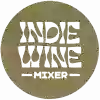Buyer's Market
By Boris Wiedenfeld
It is no big secret that, with the soft economy, wineries and distributors alike are having a hard time moving their products. Their misfortune brings great opportunity to fine wine retailers and especially to the consumer. Prices are tumbling for the budget conscious buyer and at the same time, wines are available to the public that were previously hard to obtain. As a retailer and a consumer, these are hands-down the most exciting times I have seen in this business. Brand loyalty is really being put to the test, as even waiting lists for cult wineries are getting shorter and shorter and in some cases have opened up. Allocations have multiplied or gone altogether to open-stock. Take Sea Smoke, for example. You used to have to beg to get three bottles a year of their "Ten" Pinot Noir. This year: "Five cases? No problem" (which, incidentally, took 48 hours to sell, proving that some people still have disposable income). Leonetti? "How many cases may we send you?" Beaux Freres Upper Terrace? "As much as you want." And the list goes on. Right at the start of this economic downturn I asked Beaux Freres' Kurt Johnson about Upper Terrace allocations and he clearly saw this coming when he said something like "You can get whatever you want. This isn't the time to play games with allocations."
The exciting development for the consumer is the number of great deals available at retailers. Distributors are having difficulties meeting sales goals and contracts. Added to that, containers are coming in with new vintages. Wholesalers literally don't have room for the wine, so we are seeing a lot of close-outs: 40-, 50- or even 60-percent-off sales on famous brands are not uncommon these days. If you are a retailer with a decent size bank account, you can pick and chose from more incredible bargains that you could fit into your stores. Oregon wineries aren’t immune. Many Pinots, especially from the 2007 vintage, are deeply discounted while some of Oregon's most prestigious names are on sale for the first time. Some wineries have gone under and I suspect that, before it's over, more will join them, as will some wholesalers. Many people in the industry believe that we are only seeing the tip of the iceberg. But there is also hope. Many wholesalers are reporting that things are picking up for them. The unified critical acclaim for Oregon's 2008 vintage is also helping wine' sales.
In my experienced view, the economic downturn hasn’t caused people to drink less wine, but it has changed what, when and where they drink it. Last year, our store had the highest sales in its 27-year history. In this market, at least initially, the restaurants were hit harder than the retailers. I felt conflicted about the increase in our sales, because I knew it was at the expense of my friends who own and run local restaurants. Customers felt they shouldn't spend money. This was a direct result of the media telling them that they didn't have any to spend, although for most of them, their income hadn’t changed at all. So what I heard repeatedly in those first months was "We were going to go out to eat, but then thought we better not. So we're just going to pick out a nice bottle of wine and eat at home." Needless to say, if you want to have great restaurants to go to, you will have to actually go and eat there, so they can stay in business.
People's buying behavior has changed as well. A lot of customers changed the price-tier they are buying in. People who used to shop in the $40 to $50- a bottle category are buying $30 wines. And $20 to $25 buyers are now buying $15 to $20 bottles. People in the sub $10 range are generally buying in the same price range, but because of the plethora of bargains, they are now drinking much better wine. While it is clear that the so called 'luxury-premium' market (bottles retailing around $75 to $150) is also hurting nationally (judging from brands like BV and Caymus dropping prices significantly on their top labels), this does not seem to be the case in our market. Sales are solid in this price tier. Neither Burgundy, Barolo nor Bordeaux producers seem to feel the need to offer significant discounts. The ultra-high end ($250+) market is fairly weak, with a couple of interesting exceptions. After both major bank bailout packages went into effect, we received order after order for cases of wine including Le Montrachet, First-Growth Bordeaux and other $500- bottles of wine. Judging from the shipping labels on the boxes, you would have thought we were in the banking industry: Citibank, Bank of America, JP Morgan Chase, even Lehman brothers and Bear Stearns. I guess we finally know where all our taxes went.
Boris Wiedenfeld is general manager of Sundance Cellars in Eugene












